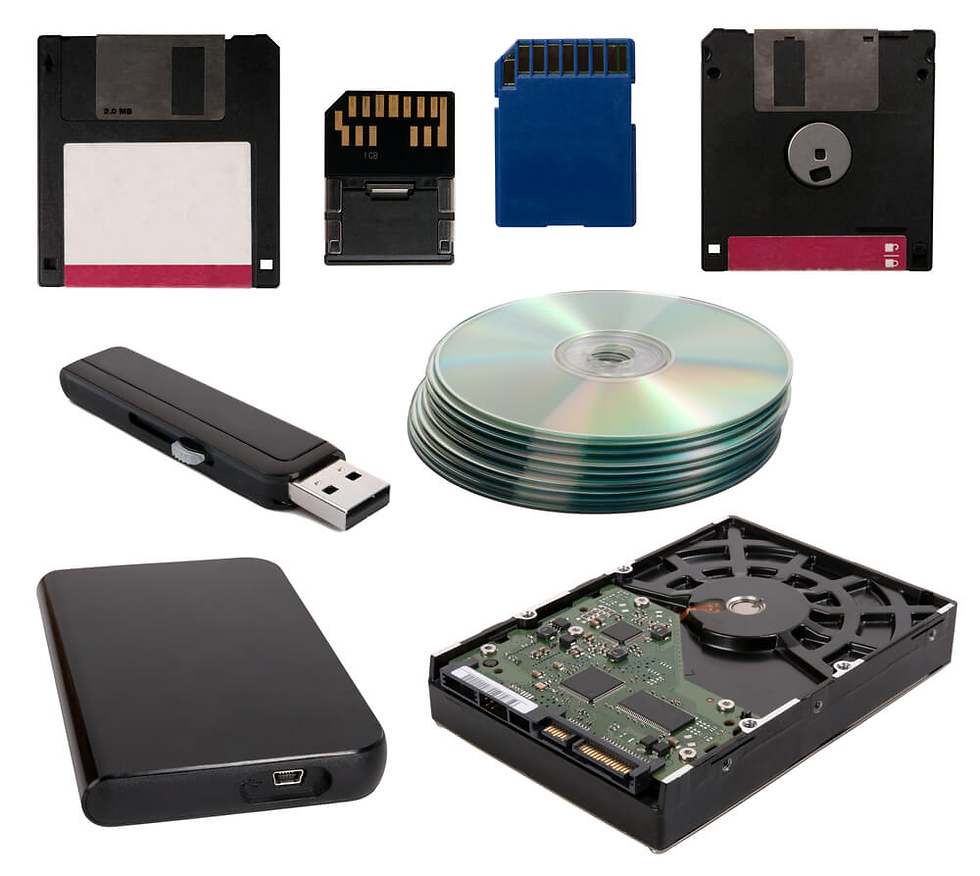Chapter 2 Main Modules of a Computer
- Erika Camilleri
- Jul 5, 2021
- 3 min read
Updated: Oct 8, 2025
Previously we described what a computer is. Now it is time to talk about how it works. We will look into an every day scenario and analyse how the components in a computer are put to use.

Glossary
I/O Subsystem | Controls the transfer of data between primary memory and other peripherals e.g., mouse, keyboard and monitor. |
Volatile | It is no longer in use when the computer is switched off. |
Non-volatile | When the computer is switched off it is still in use so data is not flushed out. |
Bus | The physical connections between components for data transfer. |
The following diagram shows the main modules of a computer. Notice that the CPU cannot process data directly from your secondary storage.

A Brief Description of the Modules
Input / Output:
All inputs (i.e. numbers, letters, musical notes, instructions, etc.) are entered from the module shown in blue. All input is transformed into ones and zeros as this is the only language that digital computers understand.
This output module is responsible for giving feedback to the user. Feedback can be a result, a message or the creation of a hardware copy like a print out. The input unit and the output unit together form the I/O Subsystem. The I/O subsystem is responsible for:
Accepting all the necessary inputs.
Placing these inputs in primary memory.
Waiting for the processing to be done.
Copying the results from primary memory to a buffer of an output device.

Primary Memory:
This is the working area of the computer. It holds the programs being currently executed and the data being worked upon. This part is (mostly) volatile i.e. when the computer is switched off or the user exits an application, data within it disappears.

Processor:
The processor executes the commands given by the user and the instructions that form the programs found in primary memory. This component is so important that it is dubbed as the brains of the computer.

Secondary Storage:
This part holds all the programs held by the computer. It is non-volatile. When the computer is switched off the programs and data in secondary storage is not wiped off. It remains there for later use.

Buses:
Represented by the green arrows in the diagram above. They are the physical paths on which data and instructions travel from one place to the other.

Everyday Scenario: Launching Minecraft

Let's go through an every day scenario. We will now be breaking down the events that occur when a kid wants to load a popular game. We will go through each event and think about which of the components would be in use.
What do you think is happening when launching Minecraft?
Let's break it down:
With the mouse [input], the user double clicks on the application icon that is docked on the task bar or on the desktop.
The Minecraft launcher on the hard disk [secondary storage] opens and loads [processor, memory] which results in a new gamer's portal window [output].
With the mouse [input], the user proceeds by clicking on "Play".
As expected, the game launches [processor, memory] in a separate window [output] and with another mouse click [input] the game is initialised [processor, memory].
During game play [processor, memory] the user is pressing keys to move the character [input] and using the mouse [input] to explore mine resources.
The user clicks on special keys [input] to display options [output] and from here the user can save the state of the game and leave [secondary storage].
The gamer's portal is still loaded and the user closes it to end the cycle [processor, memory].


Comments